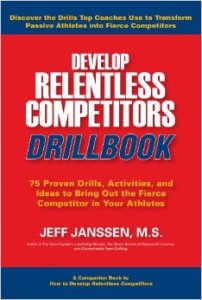It can be challenging and rewarding to teach communications skills, leadership, responsibility, and discipline to young athletes. This blog post illustrates what happens when young athletes don’t learn those skills.
Coach K
The following quotes from Coach K (http://coachk.com/quotes/) address the importance of the above-mentioned skills.
- “No matter how successful you believe you yourself to be, you can never feel as if you’ve reached the absolute pinnacle. There are always new and wonderful challenges out there, and part of maintaining success is knowing when you need to accept them.”
- “Effective teamwork begins and ends with communication.”
- “Communication does not always occur naturally, even among a tight-knit group of individuals. Communication must be taught and practiced in order to bring everyone together as one.”
- “Making shots counts, but not as much as the people who make them.”
- “A common mistake among those who work in sport is spending a disproportional amount of time on “x’s and o’s” as compared to time spent learning about people.”
On November 24, 2015 the Boulder Daily Camera ran an article, “CU football: Apsay apologizes to teammates for ‘harsh comments’ – QB criticized receivers, linemen after loss”
The article stated:
During the frustrating moments after Colorado’s 27-3 loss to Washington State on Saturday night, redshirt freshman quarterback Cade Apsay threw some criticism at his receivers and linemen.
On Tuesday, Apsay said he apologized to his teammates and doesn’t feel there will be lingering issues from those comments.
“I’ve actually apologized to the receivers and the linemen, especially,” said Apsay, who made his first career start last week. “I know I made some pretty harsh comments. I didn’t realize I was at the time. The postgame emotions got the best of me. When I did apologize to them, they didn’t really care much, especially the linemen. We’re all pretty close anyway.”
Head coach Mike MacIntyre said he didn’t know about Apsay’s postgame comments but was glad that his young quarterback took the initiative to apologize to his teammates. Junior quarterback Sefo Liufau, who is injured and didn’t make the trip to Washington, said it’ll be a good learning experience for Apsay.
The freshman quarterback was presented a great opportunity and he made a mistake. He was given a chance to learn from his error.
The story has an unfortunate ending. On March 1, 2015 the Boulder Daily Camera ran an article. “Cade Apsay, Evan White dismissed from Colorado football team -Both were dismissed “for violating team policies”
The article stated:
One day before spring football is set to begin, Colorado announced that quarterback Cade Apsay and safety Evan White have been dismissed from the team.
Head coach Mike MacIntyre said Tuesday that both were dismissed “for violating team policies.”
Apsay, who would have been a redshirt sophomore, was the Buffs’ second-team quarterback last season and started the final two games after Sefo Liufau went down with a season-ending foot injury.
Apsay completed 64.1 percent of his passes (59 of 92) for 582 yards, three touchdowns and five interceptions this past season. He was expected to compete with redshirt freshman Steven Montez and senior Jordan Gehrke at quarterback this spring.
Hopefully the freshman quarterback will learn from these two mistakes.
The Bottom Line
College athletic programs provide students with a great venue for learning the lessons of life. The only caveat is the athletes have to be willing participants in the learning process.
One of two things has happened. Either communications, leadership, responsibility, and discipline are not being taught in the CU football program or not all athletes are taking advantage of a wonderful opportunity to learn and grow as individuals.
